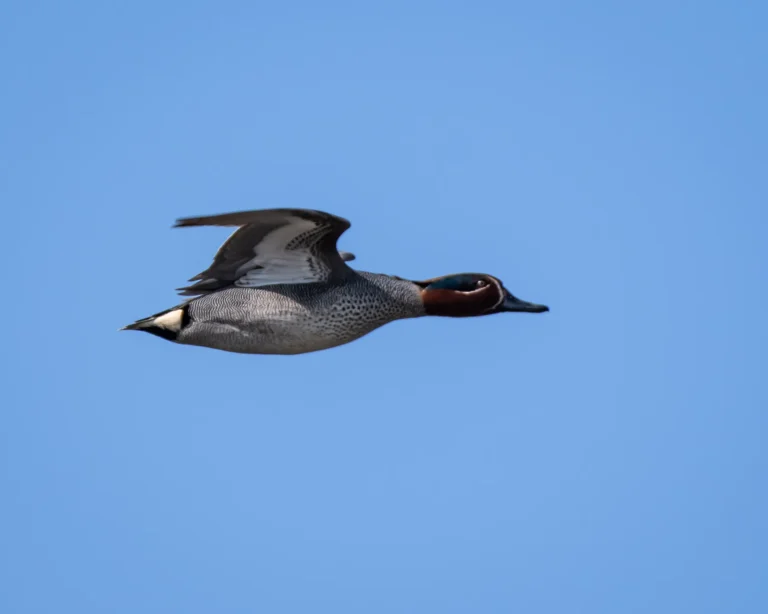
Eurasian teal

Description and how to observe Eurasian teal:
The eurasian teal (Anas crecca) is a species of small duck recognised for its compact size, with an average length of 34-38 cm and a wingspan of about 53-59 cm. Males have a distinctive plumage, with a brick-brown head with a metallic green stripe down the side, while females are more modest in colour, camouflaged in shades of light brown and grey to protect themselves from predators. For observers, the eurasian teal can be found mainly in the wetlands of the Danube Delta, favouring quiet pools and lagoons. It is usually seen in large groups, especially during the migration season.
What it feeds on Eurasian teal:
The eurasian teal is omnivorous, feeding on a variety of aquatic plants, seeds and small insects. In the Danube Delta, eurasian teals scavenge the seabed for algae and aquatic grasses, but they also eat crustaceans and aquatic insects, especially during the breeding season when they need extra protein for their young.
Threats:
Although the Eurasian teal is not a globally endangered species, its population is influenced by water pollution, degradation of wetland habitats and illegal hunting. In the Danube Delta, human activities such as over-tourism, intensive fishing and environmental changes due to hydro-engineering can negatively affect the habitat of this species.
Ecological role:
More information about Anas crecca:
The eurasian teal is one of the most numerous duck species migrating through the Danube Delta. Due to its beauty and interesting behaviour, it is a species appreciated by birdwatchers from all over the world, with the Danube Delta being an ideal place to observe this species during its autumn and spring migration.
For a complete birding experience, it's recommended that you watch in the early hours of the morning, when the birds are active and less disturbed by human presence.
Discover now the most beautiful places in the Danube Delta!
In the following pages, you will find detailed information about:
- Top tourist destinations: Traditional villages, nature reserves, tourist trails and much more.
- Activities and attractions: Everything you need to know about boating, fishing, bird watching, cycling and other activities.
- Accommodation and catering: Accommodation to suit all budgets and restaurants serving traditional cuisine.




